Volume 28.3
September–December 2025
Full table of contents
ISSN: 1094-8074, web version;
1935-3952, print version
Recent Research Articles
See all articles in 28.3 September-December 2025
See all articles in 28.2 May-August 2025
See all articles in 28.1 January-April 2025
See all articles in 27.3 September-December 2024
Interested in submitting a paper to Palaeontologia Electronica?
Click here to register and submit.
Article Search
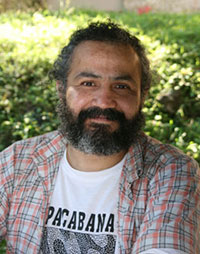 Jesús Alvarado-Ortega
Jesús Alvarado-Ortega
Instituto de Geología, Universidad Nacional Autónoma de México
Circuito de la Investigación S/N, Ciudad Universitaria
Coyoacán, D.F., 04510
Mexico
alvarado@geologia.unam.mx
Born in 1966 in Zacatecaz, in 1998, I got the Bachelors degree (Biology) in the Sciences Faculty at Universidad Nacional Autónoma de México (UNAM). In 2005, I got my Doctoral degree in the Geological Institute (IGM), UNAM. During 2005-2007, I had a Posdoctoral position in the Biological Institute at Universidade do Estado do Rio de Janeiro, Brazil. Always I worked on Mexican fossil fishes under my advisor and friend Dr. Shelton P. Applegate. Since 2007, I´m in charge of the Tlayúa project as full-time Researcher at IGM, UNAM. The main interest of my work is focused on the taxonomical characterization of Mexican fossil vertebrates and the understood of phylogenetic and biogeographic patterns and process outlined on these fossils.

 Martha Cuevas-García
Martha Cuevas-García
Instituto Nacional de Antropología e Historia
Dirección de Registro Público de Monumentos y Zonas Arqueológicas
Instituto Nacional de Antropología e Historia
Av. Victoria 110, Copilco El Bajo
Mexico DF 04510, D.F
Mexico
marcuevas_12@hotmail.com
I am an archeologist graduated in the Escuela Nacional de Antropología e Historia (ENAH), in México; I got the Master and PhD desgrees working on the Mesoamerican Studies at the Facultad de Filosofía y Letras at the Universidad Nacional Autónoma de México (UNAM). My professional career is linked with three essential activities on the Instituto Nacional de Antropología e Historia (INAH): I have been on charge of several research projects and archaeological rescue, conservation programs, and protection and maintenance of archaeological sites. I have been involved on the performace of exposition on archeological museums and exhibitions as well as a researcher at INAH Center Chiapas and the National Museum of Anthropology. I was responsible for the excavation of the censers during 1997 and 1998 seasons in the Temple of the Cross in Palenque, Chiapas; responsible of the Palenque project about the Early Classic; Temple twentieth season in 2010. Now I am on charge of some projectes related with the Palenque archaeological collections. Since 2007 I love the fossils, when I began the archeological-paleontological research project in the area of Palenque, Chiapas, together Jesús Alvarado-Ortega from with the Instituto de Geología (UNAM).

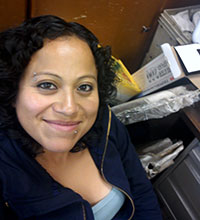 María del Pilar Melgarejo-Damián
María del Pilar Melgarejo-Damián
Posgrado en Ciencias Biológicas, Instituto de Geología
Universidad Nacional Autónoma de México
Circuito de la Investigación S/N, Ciudad Universitaria
Coyoacán, D.F., 04510
Mexico
pilar_melgarejo@yahoo.com
She has graduated with a Masters degree and is a young promising Mexican paleontologist. She received her degrees from the Universidad Nacional Autónoma de México (UNAM). During the bachelors, Pily used different statistical tools to develop a comprehensive quantitative framework to assess the taxonomical diversity of Pleistocene horses in Mexico. During her Masters, she worked on the morphological diversity of the ellimmichthyiform fishes supported in multivariate analyses. Pily has been a main participant in the projects of her advisor (Jesús Alvarado-Ortega), in the prospection and collection of vertebrates in different localities in Mexico as well as in the application of new analyses to characterize the taxonomical diversity and of Mexican fossils and their evolutionary processes and ontogenetic development.

 Kleyton Magno Cantalice
Kleyton Magno Cantalice
Laboratório de Ictiologia Tempo e Espaç
Instituto de Biologia Roberto Alcântara Gomes
Universidade do Estado do Rio de Janeiro
Rio de Janeiro, 20550-900
Brazil
kleytonbio@yahoo.com.br
Kleyton Cantalice recently has obtained his Ph.D. in Biosciences at Universidade do Estado do Rio de Janeiro (UERJ). His field research is focused on taxonomy and systematic of fossil and extant acanthomorphs fishes to understand the origin and evolution of derived forms on salt and freshwater enviroments, principaly along America. His studies are based on anatomical comparisons, phylogenetic systematic, biogeography and biochronology. Currently, he also is engaged on project of assembly and maintenance of a neotropical fish skeletal collection preparing dry articulated and cleared and stained samples.

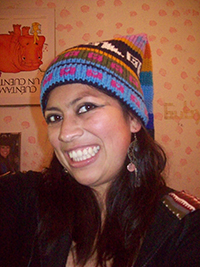 Abril Alaniz-Galvan
Abril Alaniz-Galvan
Posgrado en Ciencias Biológicas
Instituto de Geología, Universidad Nacional Autónoma de México
Circuito de la Investigación S/N
Ciudad Universitaria
Coyoacán, D.F., 04510
Mexico
luneta_negra@yahoo.com.mx
I am a biologist working on fossil fishes from Chiapas, Mexico. In 2011, I got my degree with a thesis on the fossils of Perciformes fish from Palenque, Chiapas. I was working on paleontological prospection and fossil recovery on different Cretaceous and Tertiary localities along the southern part of Mexico. I am planning to start my Master´s degree studies working on fossil fishes from Mexico.

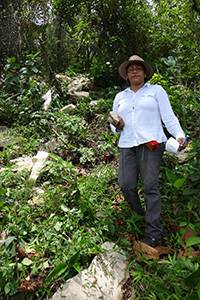 Gisel Solano-Templos
Gisel Solano-Templos
Posgrado en Ciencias Biológicas
Instituto de Geología, Universidad Nacional Autónoma de México
Circuito de la Investigación S/N
Ciudad Universitaria
Coyoacán, D.F., 04510
Mexico
giselst@hotmail.com
I am a biologist working on fossil fishes from Chiapas, Mexico. In 2011, I got this degree by the Facultad de Ciencias at Universidad Nacinal Autónoma de México (UNAM). Today I am studying the Master´s degree in this same university under under the guidance of Jesús Alvarado-Ortega. My research interest is focused on the taxonomy and systematic of the Paleocene Clupeomorpha fishes from the Tenejapa Formation, near Palenque, Chiapas.

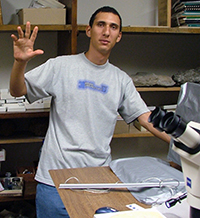 Bruno Andrés Than-Marchese
Bruno Andrés Than-Marchese
Museo de Paleontología “Eliseo Palacios Aguilera”
Instituto de Historia Natural y Ecología
Calzada de los Hombres Ilustres s/n
Colonia Centro
Tuxtla Gutiérrez, 29000, Chiapas
México
bruthmar@gmail.com
I am a biologist working on diferent groups of fossils from Mexico Mexico. In 2008, I got this degree by the Universidad de Ciencias y Artes de Chiapas (UNICACH), Mexico, and actually I´m studying the Master´s degree in this same institution. My research interest is focused on the taxonomy and systematic of fossil fish from Cretacoeus localities of Chiapas. I have been working in the Museo de Paleontología "Eliseo Palacios Aguilera", collecting, preparing, and studying diverse groups of fossils.

FIGURE 1. Map of the vicinity of Palenque including División del Norte and Belisario Domínguez quarries. The yellow areas show the outcrops of Paleocene marine strata identified here as Tenejapa-Lacandón unit (based on Servicio Geológico Mexicano, 2006a, 2006b).
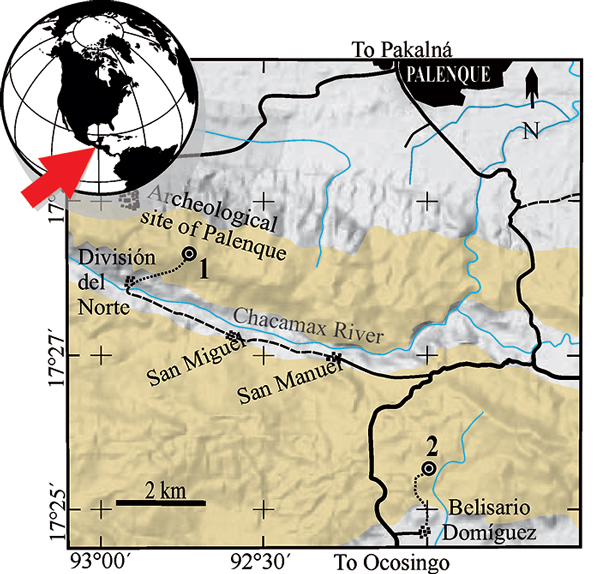
FIGURE 2. General views of the División del Norte ( 1 ) and Belisario Domínguez quarries ( 2 ). 3, A nodule in situ at División del Norte (between the black arrows). 4, Strata laminated in Belisario Domínguez quarry. 5, Gray silicified bands within the marl strata in a Paleocene non fossiliferous quarry near Palenque. 6, Plant or algae remains remains of Belisario Domínguez quarry.
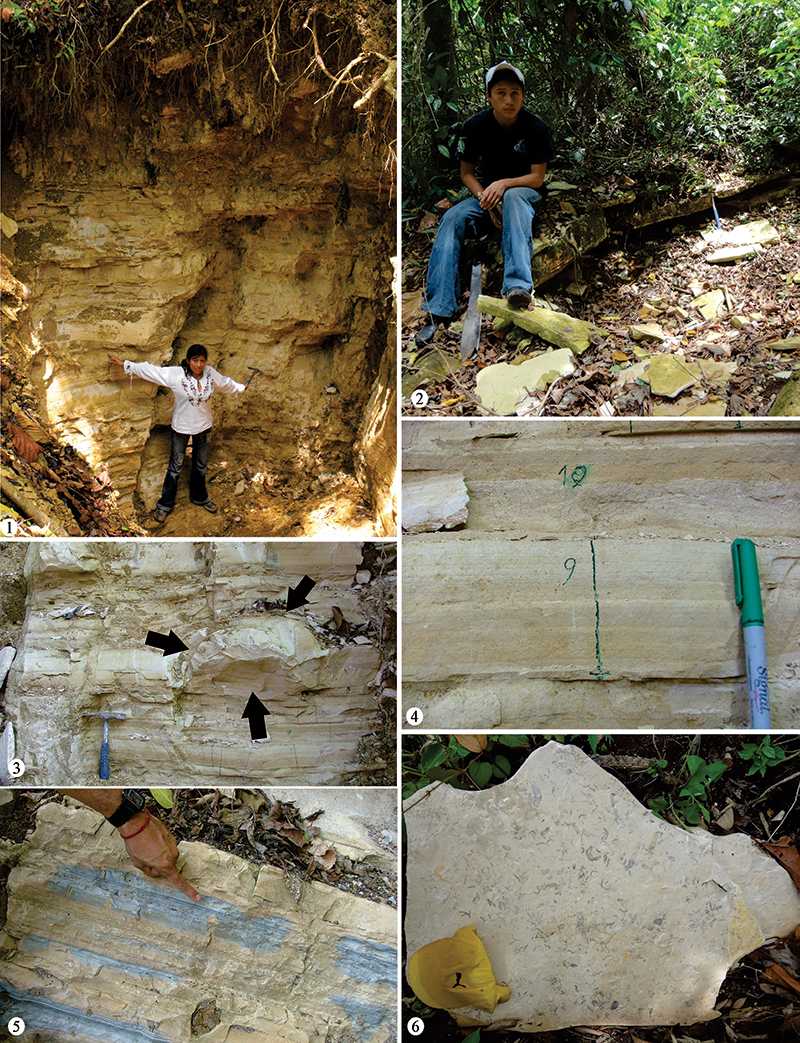
FIGURE 3. 1 , General view of the specimen IGM 4547, an anguilliform fish from the Paleocene marine strata at Belisario Domínguez quarry, Municipality of Palenque, Chiapas, Mexico. 2 , Close up of the posterior part of the trunk and caudal fin. 3 , Close-up of the region of the head and anterior part of the trunk. Scale bars equal 10 mm. Abbreviations: af, anal fin; br, branchistegal rays; cf, caudal fin; df, dorsal fin; op, opercle; pfr, pectoral fin rays; numbers show the position of each vertebrae.
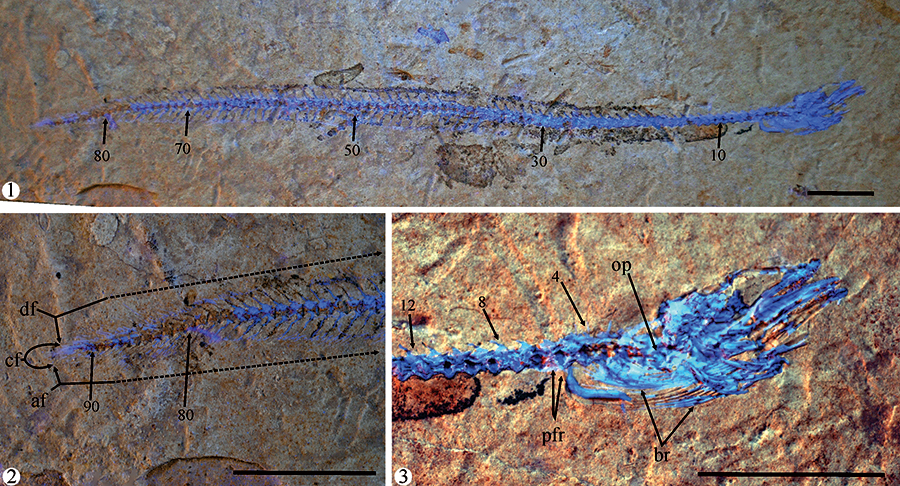
FIGURE 4. 1 , General view of the specimen IGM 4548, a clupeid from the Paleocene marine strata at División del Norte, Municipality of Palenque, Chiapas, Mexico. 2 , Close-up of the pectoral girdle. 3 , Close-up of the caudal region. Abbreviations: as, abdominal scutes; pcl, posclethra; pu1+un1, pural centra 1 and uroneural 1 fused to each other; numbers show the position of ribs and vertebrae. Scale bar equals 10 mm.
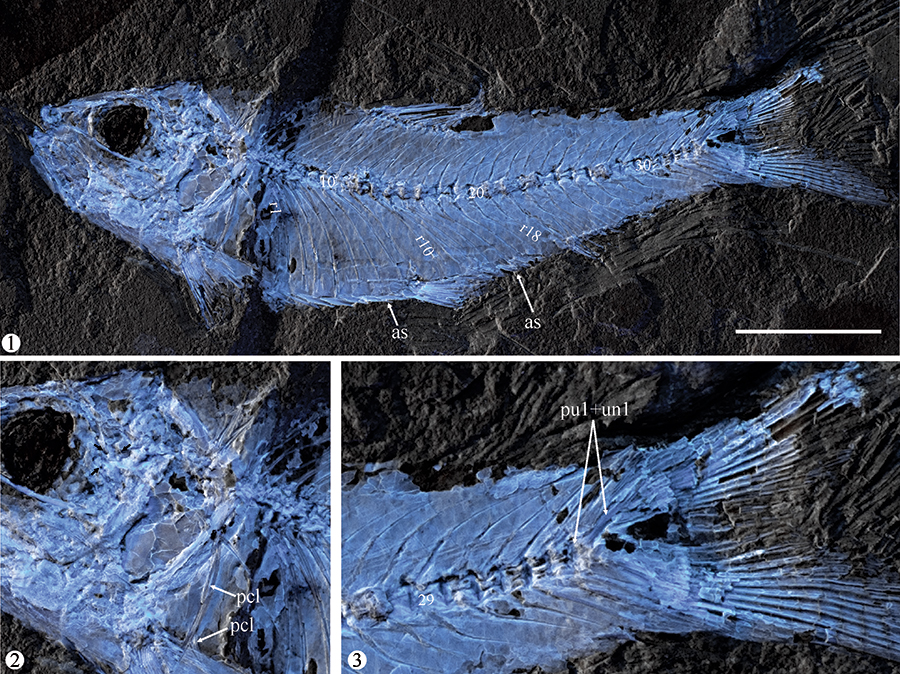
FIGURE 5. Specimen IGM 4549, Phareodus sp. from the Paleocene marine strata of División del Norte quarry, Municipality of Palenque, Chiapas, Mexico. Scale bar equals 20 mm. Abbreviations: alj, articulation of lower jaw; op, opercle; pfr 1, first pectoral fin ray; psp, parasphenoid; arrows in the tail enclose the caudal principal fin rays.
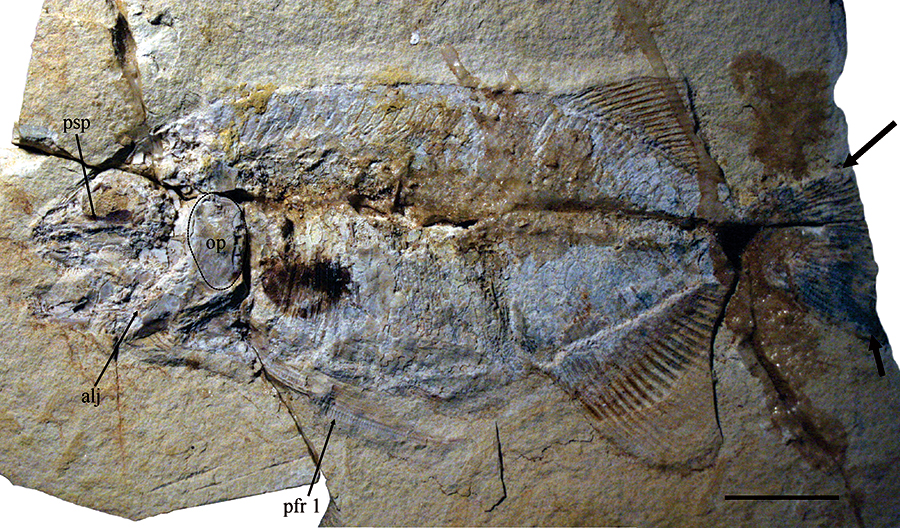
FIGURE 6. Specimen IGM 4550, a “Serranidae” fish from the Paleocene marine strata at División del Norte quarry, Municipality of Palenque, Chiapas, Mexico. Scale bar equals 10 mm. Abbreviations: afr, anal fin ray; afs, anal fin spine; dfr, dorsal fin rays; dfs, dorsal fin spine; mx, maxilla; op, opercle; par, parapophysis (in the vertebra 10); pcfr, pectoral fin rays; pmx, premaxilla; pvb, pelvic bone; pvfr, pelvic fin rays; pvfs, pectoral fin spine; smx, supramaxilla; numbers show the position of the vertebrae.
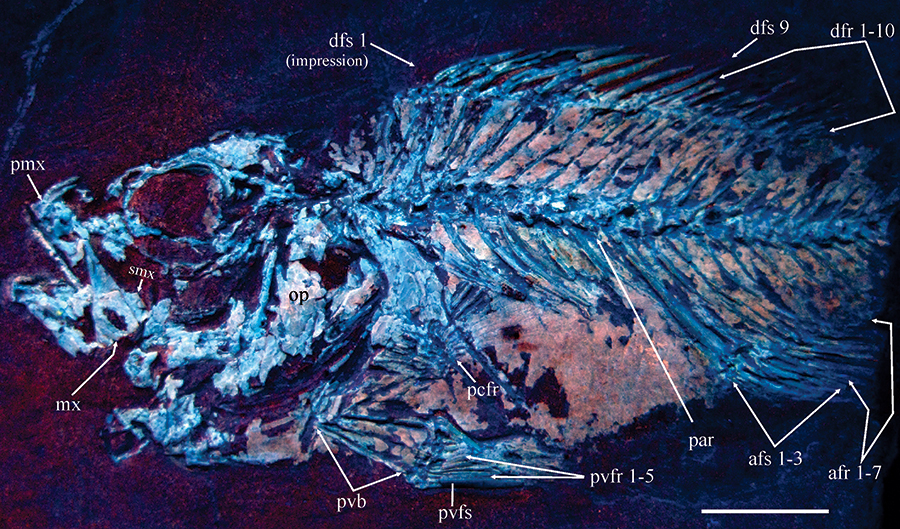
FIGURE 7. Close-up and line drawing of the anterior dorsal region of the body of IGM 4550, a “Serranidae” fish from the Paleocene marine strata at División del Norte quarry, Municipality of Palenque, Chiapas, Mexico. Scale bar equals 10 mm. Abbreviations: dfs, dorsal fin spine; dpt, dorsal pterygiophopre; ns, neural spine; sn, supraneurals; numbers show the position of the vertebrae.
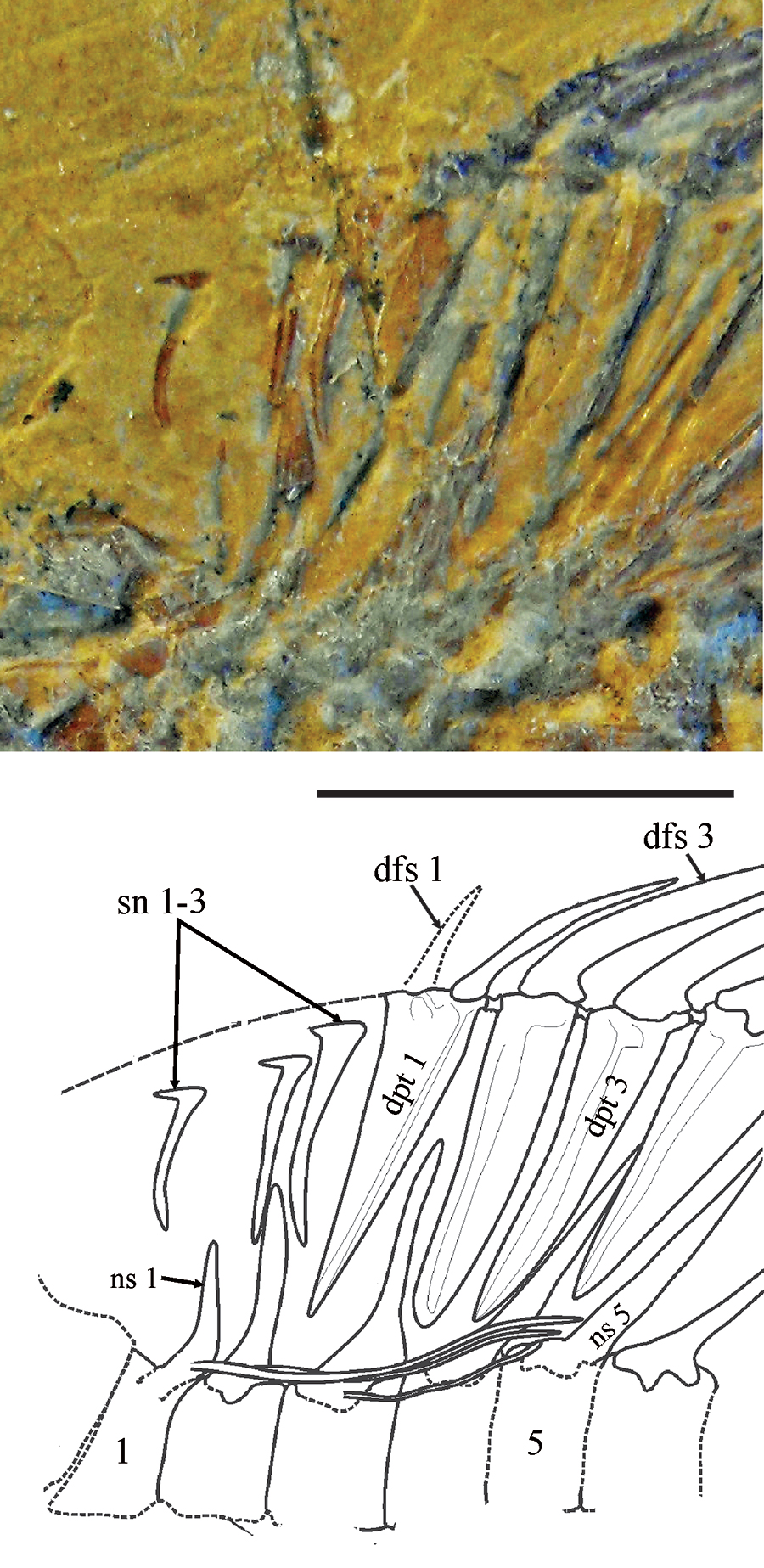
FIGURE 8. Specimen IGM 4551, Pycnodus sp. from the Paleocene marine strata of División del Norte quarry, Municipality of Palenque, Chiapas, Mexico. Scale bar equals 20 mm. Abbreviations: cls, cloacal scale; cp, caudal peduncle; dmfe, dermocranial fenestra; drs, dorsal ridge scales; ms, modified bar-like scales; papr, parietal process; partt, prearticular teeth; vks, ventral keel scales; vt, vomer teeth.
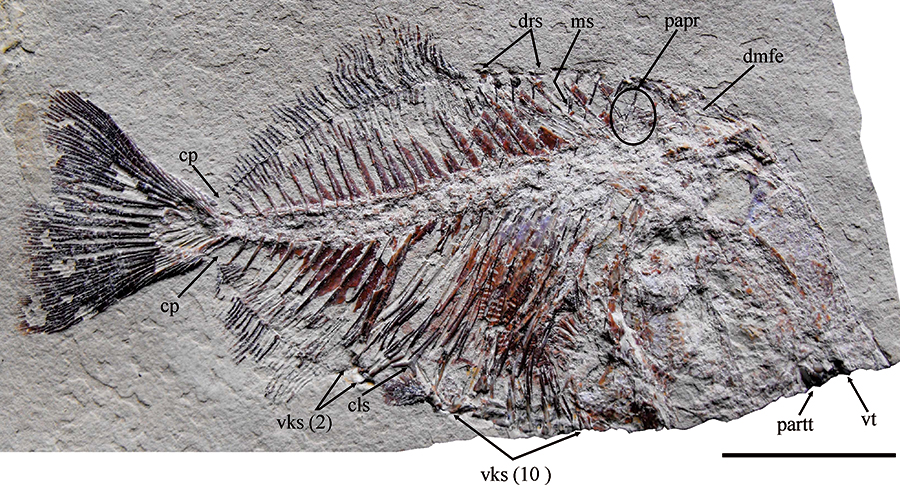
FIGURE 9. Paleocene map showing the distribution of localities with osteichthyan fossils (based on Weems, 1998; Arratia et al., 2004) (black and white concentric circles), the distribution of the craters of the multiple asteroid impacts in the mass extinction event of the Cretaceous-Tertiary boundary (black and white concentric stars), and the distribution of land and main marine sedimentary domains around Palenque (based on Meneses-Rocha, 2001, figure 12e).
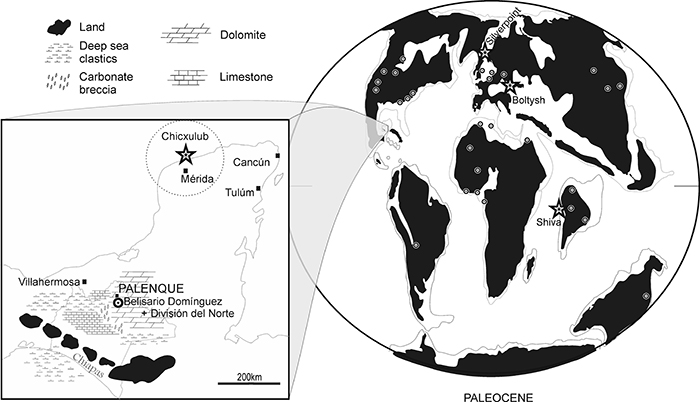
TABLE 1. Comparison the specimen IGM 4550 and other Cretaceous-Paleocene incertae sedis perciformes, blue areas enclose the characters shared by IGM 4550 and other fossil taxa/specimens. Abbreviations: abd, abdominal vertebrae; cau, caudal vertebrae; cic, cicloid scale; cte, ctenoid scale; smx, supramaxila (based on Alaniz-Galvan, 2011, table 6).
| Dorsal fin formula | Anal fin formula | Vertebrae (abd+cau) | Vertebrea with parapophysis | Predorsal Formula | Scale Type | smx | |
| Percomorpha indet. (Arratia et al., 2004) | IX?+4? | ? | 14?(8?+6?) | 6? (3-8?) | ? | cte | ? |
| Nardoicthys | VI-VII+11-12 | 0+10 | 25(11+14) | 6 (6-11) | 0//0+0+1/1/1/ or 0/0/0+1/1/1 |
cic | 0 |
| Zornziperca | VI+11 | 0+10 | 25(11+14) | 6 (7-12) | 0/0/0+1/1/1/ | cic | 0 |
| Prolates | VIII-IX+10? | III+6? | 24-25(10-11+14) | ? | ? | cte | 1 |
| Proserranus | IX-X+10 | III+ ? | 24-25(10+14-15) | 2 (9-10) | ? | cte | ? |
| Eoserranus | ? | ? | ? | ? | ? | cic | ? |
| Bannikovperca | ? | III+9 | 17?(2?+15) | ? | ? | cic | 0 |
| Johnsonperca | IV?+? | - | 9?(9?+?) | 6? (4-9?) | /0+0/0+1/1/1/ | cic | 0 |
| Jimtylerius | X+9 | III+7? | 24(10+14) | 5 (6-10) | /0+0/0+2/1+1/ | cic | 0 |
| Saldenioicthys | VI?+? | III+? | 20?(6?+14) | - | ? | cte | 0 |
| Indiaicthys | VIII+8 | III+10 | 24(10+14) | 2 (9-10) | 0/0+0+2/1+1/ ? or 0+0/0+2/1+1/ ? or 0/0/0+2/1+1/ ? |
cte | 1 |
| Amphiperca | IX-XI+10-12 | III + 8-9 | 27-28(10-11+16-17) | 5? | 0/0/0+2/1+1/ | cte | ? |
| Palaeoperca | VIII + I, 8-9 | III + 6-8 | 23(10+ 13) | 7? | ? | cte | ? |
| Rhenanoperca | IX-XI+9-10 | III+7-9 | 24-25( 9-11?+14-15 | 7? | 0/0/0+2/1+1/ | cte | 1 |
| IGM 4550 | IX+10 | III+7 | 24(10+14) | 3 (8-10) | 0/0/0+2/1+1/ | cte | 1 |
Paleocene fishes from Palenque, Chiapas, southeastern Mexico
This paper represents the first news about two Mexican Paleocene fossil localities, the División del Norte and the Belisario Domínguez quarries, located near Palenque, State of Chiapas; southeastern Mexico. These are marine outcrops belonging to Paleocene strata previously named as the Tenejapa Formation (toward the West) and the Lacandón Formation (toward the East and in Guatemala); hence, referred herein to the Paleocene Tenejapa-Lacandón Unit. In these sites the fossil fishes, particularly abundant and well preserved, constitute an assemblage that includes potential new species of Pycnodontiformes, Osteoglossiformes, Anguillifromes, Clupeiformes, and "serranids" that might expand their temporal and paleogeografical distribution worldwide and therefore become important elements to understand the historical processes of these groups previously known from continental and marine Eocene localities around the world. These 63 my fish localities are the closest, temporally and geographically, sites to the Chicxulub Crater, a crater intimately associated to the Mass Extinction Event at the Cretaceous-Paleogene boundary (K/P); therefore the accurate study of these fossil will contribute to achieve a better understanding of the marine vertebrate communities throughout this important geological event.
Resumen en Español
Peces del Paleoceno de Palenque, Chiapas, Sudeste de México
Este trabajo brinda los primeros datos geológicos y paleontológicos de dos localidades mexicanas de fósiles paleocenos recientemente descubiertas en las cercanías de Palenque, que aquí son formalmente nombradas como las canteras División del Norte y Belisario Domínguez. Ambos sitios representan afloramientos de rocas marinas a lo largo del estado de Chiapas que anteriormente fueron referidos a las formaciones Tenejapa (hacia el Oeste) y Lacandón (hacia el Este y en Guatemala); sus límites son poco claros en la zona de Palenque y por eso las localidades señaladas son referidas aquí como parte de la Unidad de Tenejapa-Lacandón. Los fósiles más abundantes y mejor conservados en estos sitios son peces representantes de grupos bien conocidos en localidades continentales y marinas del Eoceno de otras regiones del planeta. Otros elementos de este conjunto son restos de tortugas, cangrejos e impresiones carbonosas de plantas. Esta peculiar asociación fósil incluye posibles nuevas especies de Pycnodontiformes, Osteoglossiformes, Anguilliformes, Clupeiformes, y Percoidei primitivos o "serránidos" que amplían la distribución temporal y paleogeográfica de sus respectivos grupos, convirtiéndose así en elementos adicionales a ser analizados para comprender sus distintos procesos evolutivos. Geográfica y temporalmente, estas localidades de peces de 63 ma son las más cercanas al punto del impacto del asteroide Chicxulub, cuyos efectos están ligados a una de las extinciones en masa más importantes y al establecimiento del límite Cretácico-Paleógeno (K/P); y por eso son un escenario paleontológico importante para entender la recuperación de las comunidades marinas en este importante episodio de la vida.
Palabras clave: Paleoceno, fósiles, Palenque, Tenejapa, Chiapas, México.
Traducción: Enrique Peñalver and authors
Résumé en Français
Poissons paléocènes de Palenque, Chiapas, sud-est du Mexique
Ce papier présente les premières données géologiques et paléontologiques sur les carrières de la División del Norte et de Belisario Domínguez, deux localités fossilifères paléocènes, découvertes récemment près de Palenque dans l'État de Chiapas au Mexique. Ces deux localités font partie d'affleurements marins précédemment décrits comme les formations de Tenejapa (vers l'ouest) et de Lacandón (vers l'est et au Guatemala). Puisque les limites de ces formations ne sont pas claires dans la zone de Palenque, l'association géologique de ces localités est attribuée à l'unité paléocène de Tenejapa-Lacandón. Les poissons fossiles sont particulièrement abondants et bien préservés dans ces sites ; ils représentent des taxons déjà connus mondialement dans des localités éocènes dont les strates ont été déposées sous des conditions continentales et marines. Ce nouvel assemblage est particulier car il inclut de potentielles nouvelles espèces de Pycnodontiformes, Osteoglossiformes, Anguilliformes, Clupeiformes, et "serranidés". Ces nouvelles espèces pourraient étendre les distributions temporelles et paléogéographiques de ces groupes mondialement et pourraient donc constituer des éléments importants pour comprendre leur évolution. Ces localités, datant de 63 Ma, sont les plus proches, temporellement et géographiquement, des sites du cratère du Chicxulub, un cratère intimement lié à l'évènement d'extinction de masse de la limite Crétacé-Paléogène (K/P). Ces nouvelles localités nourrissent un scénario paléontologique important qui va permettre une meilleure compréhension des communautés de vertébrés marins au cours de cet évènement géologique majeur.
Mots-clés : Paléocène ; fossiles ; Palenque ; Tenejapa ; Chiapas ; Mexique
Translator: Antoine Souron
Deutsche Zusammenfassung
Paläozäne Fisch aus Palenque, Chiapas, südöstliches Mexiko
Diese Abhandlung liefert die ersten geologischen und paläontologischen Daten über zwei mexikanische Fossil-Fundstellen, die División del Norte und die Belisario Domínguez Steinbrüche, die kürzlich nahe Palenque im Staat Chiapas entdeckt wurden. Beide sind Teil der marinen Aufschlüsse, die bisher als Tenejapa (nach Westen) und Lacandón Formationen (nach Osten und in Guatemala) bekannt waren. Da die Grenzen dieser Formationen im Palenque-Gebiet unklar sind, werden diese Lokalitäten der paläozänen Tenejapa-Lacandón Einheit geologisch zugeordnet. Besonders die fossilen Fische kommen hier häufig vor und sie sind zudem sehr gut erhalten. Sie repräsentieren Taxa die bisher von eozänen Fundstellen in der ganzen Welt bekannt waren und deren Strata unter kontinentalen und marinen Bedingungen abgelagert wurden. Diese neue Assemblage ist besonders da sie mögliche neue Arten von Pycnodontiformen, Osteoglossiformen, Anguillifromen, Clupeiformen und "Serraniden" enthält, was ihre zeitliche und paläogeografische Verteilung ausdehnten könnte und die dadurch wichtige Komponenten zum Verständnis der Evolution dieser Gruppen werden. Diese 63 Mio. Jahre alte Fisch-Lokalitäten sind die nächsten Fundstellen - sowohl zeitlich als auch geografisch - zum Chicxulub-Krater, einem Krater, der in engem Zusammenhang mit dem Massenaussterbeereignis an der Kreide-Paläogen Grenze (K/P) in Zusammenhang steht. Diese neuen Fundstellen stellen ein wichtiges paläontologisches Szenario dar, das dazu beitragen wird, die marinen Wirbeltier-Gesellschaften während dieses wichtigen geologischen Ereignisses besser zu verstehen.
Schlüsselwörter: Paläozän; Fossilien; Palenque; Tenejapa; Chiapas; Mexiko
Translator: Eva Gebauer
Arabic
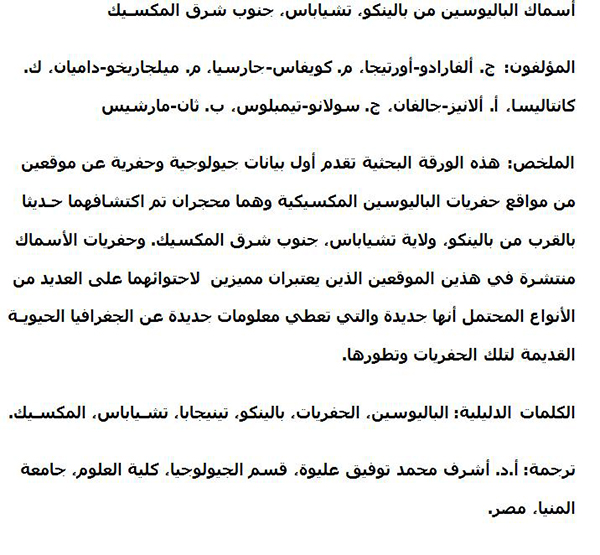
Translator: Ashraf M.T. Elewa
-
-
PE: An influential journal
 Palaeontologia Electronica among the most influential palaeontological journals
Palaeontologia Electronica among the most influential palaeontological journalsArticle number: 27.2.2E
July 2024





 A Review of Handbook of Paleoichthyology Volume 8a: Actinopterygii I, Palaeoniscimorpha, Stem Neopterygii, Chondrostei
A Review of Handbook of Paleoichthyology Volume 8a: Actinopterygii I, Palaeoniscimorpha, Stem Neopterygii, Chondrostei